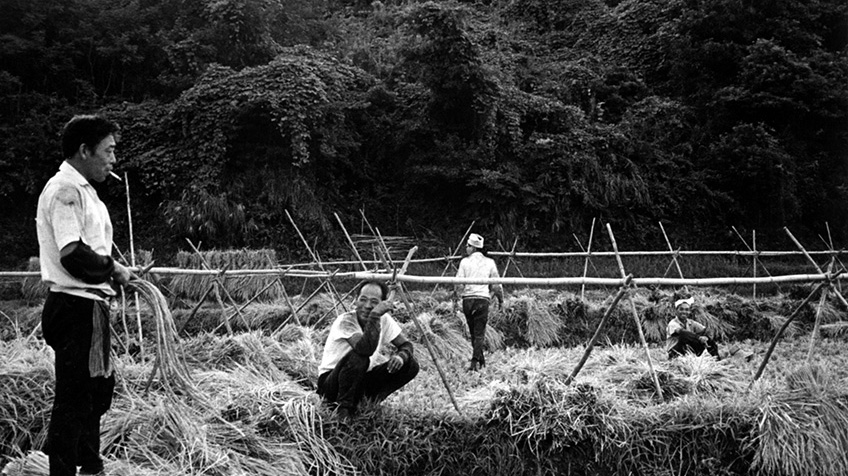산리즈카 – 헤타 마을Narita: Heta Village
오가와 신스케
- Japan
- 1973
- 146min
- DCP
- black and white
Synopsis
나리타 시리즈의 여섯 번째 이야기. 6년째 계속된 투쟁은 주민들의 일상이 되었다. 많은 주민들이 두 번째 강제집행 때 체포되었고, 오가와 프로덕션이 머무르던 헤타 마을에선 젊은 농부가 자살한다. 영화에서 카메라는 이전 투쟁의 현장을 쫓아가는 것을 벗어나 주민들의 생활 속으로 들어가 마을 주민들의 생활 리듬과 문화를 보여준다. 투쟁 현장을 쫓기보다 주민들의 과거와 현재의 모습들에 집중하는 오가와 신스케 감독의 스타일 변화를 보여주는 작품이다.
Review
In this sixth film of the 7-part series, the village is the main character. Unlike the other films that began with a scene of clashing with the riot police, it begins with in introduction by a village elder of the history of the ’Heta’ village. The absence of fierce fight scenes continues to the end and instead portrays the lives of the villagers in relation to death in a composed manner. While the other films dealt with daily life within the struggle, this one seems to illustrate the struggles within daily life.
There are several types of death in this film; those that lie beneath the cemetery taken over by the airport authority, the three who died during the second administrative execution process in September, 1971, and one young villager’s suicide in the whirlwind of arrests of village youth following the death of a riot police officer. The scenes where death is discussed are heavy and even the women who were cheerful at the site of fights talk less.
At the same time, Ogawa Shinsuke shows how women take on a core role in the conduct of life in the village. The Sanrizuka struggle was also a process of rediscovering and reinventing the traditions that consolidated the village with women being the actuators. The sight of a woman carving a penis out of radish demonstrates symbolically that the village order which appears to be male-oriented is actually built by women.
Beginning with a tale told by a grandfather and ending with women chanting Buddhist scripture, this film makes us think about the meaning of a village community.
Director
-

오가와 신스케Ogawa Shinsuke
Sennen Theater (1986)A Japanese Village-Furuyashikimura (1982)Magino Story: The Pass (1977)Magino Story: The Serculture (1977)Narita: The Skies of May (1977)
Credit
- ProducerHiroo Fuseya, Toshio Iizuka
- Cinematography Masaki Tamura
- Editor Tatsuo Takahashi
- Sound Yukio Kubota
Contribution / World Sales
Contribution / World Sales Athénée Français Cultural Center
Phone 81 3 3291 4339
E-mail takasaki@athenee.net
Website http://www.athenee.net


